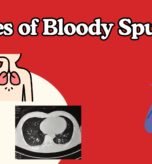Stridor is a loud high-pitched sound that is produced while breathing when a baby tries to breathe through a blocked or narrow upper airway. This block can be in the nose, throat, pharynx or in the voice box or larynx.
Stridor can be present in a baby since birth or can develop later in life. The onset of symptoms varies in different causes of stridor. Birth defects in the upper airway may produce a persistent stridor since birth while infections like croup produce a short-lived stridor in older children.
What are the causes of stridor?
- Anatomical birth defects: Some babies may be born with abnormal formation of upper airway structures including the larynx and pharynx. In these babies, stridor can be heard at birth or soon after birth and is persistent. Some examples of abnormal laryngeal structures are
- Laryngomalacia: Seen in 70% of babies with stridor, it is the most common cause of stridor in infants. The noisy breathing in this case reduces when the baby is calm and asleep and increases when he is agitated. The sound characteristically reduces as the baby lies on his tummy. This condition is by far a benign, self-limiting condition and does not require any treatment in most babies. These babies often recover by 1 year of age without any active treatment.
- Laryngeal cleft: One wall of the larynx is not formed properly and it may communicate with the food pipe lying behind it. These babies often have stridor along with feeding issues like choking on feeds.
- Laryngeal growths: Tumor like growth called polyps that are present since birth in the larynx can block the glottis and produce a stridor in babies. Some babies may have hemangiomas (blood vessels that form a tumour) in the larynx. Warts or papillomas can also produce stridor if present in the larynx.
- Subglottic steonosis: the area below the vocal cords is called subglottis. Narrowing of this area can be since birth (Congenital) or it may be acquired (after endotracheal intubation or infection).
- Tracheal stenosis: Narrowing of the trachea is called stenosis. This can be due to completely formed tracheal rings, or problems in the tracheal cartilage. Infections in the trachea can also lead to swelling and stenosis of the airway.
- Tracheomalacia: Weakness of the cartilage in the trachea can make the trachea oval in shape instead of round and lead to a stridor. Because of the weak tracheal wall, it can collapse and close at the time of coughing or crying and lead to episodes of apnea.
- Physiological Birth defects: Improper functioning of the laryngeal structures can lead to abnormal closure of the structures during inspiration and expiration leading to narrowing and production of stridor.
- Vocal cord Palsy: The vocal cords that form the voice box move inwards and outwards to produce sound. In some children these vocal cord movements may be reduced or absent causing them to stay closed and hence, narrowing the airway. This may be present since birth or maybe acquired after an infection or injury.
- Pharyngeal and laryngeal muscular weakness: This is commonly seen in neurological patients with tone problems. These children often have stridor specially in sleep and are at increased risk of aspiration.
- Acquired causes of upper airway obstruction: Infections, airway injury, prolonged ICU stay, prolonged infections, vascular malformations can all lead to narrowing of the upper airway leading to stridor.
- Infections: Most common cause of stridor in children 0-3 years is croup or laryngotracheobronchitis (LTB) cause by the parainfluenza virus. Other infections known to cause stridor in babies are epiglottitis, bacterial tracheitis and membrane formation in diphtheria.
- Airway injury: this can be due to ingestion of corrosive foreign bodies like button battery, manipulation of airway during endotracheal intubation, prolonged intubation in PICU, persistent aspiration or reflux disease.
- Airway compression by mediastinal structures: The trachea is encased by many major blood vessels around it. In case of abnormal formation of these blood vessels there can be compression of the airway or trachea leading to narrowing. In some situations tumors, enlarged lymph nodes or enlarged heart chambers can push the trachea from outside leading to narrowing.
Although the causes of stridor can be innumerable, these are the common causes that we encounter in children.
Red Flag signs
- Persistent noisy breathing,
- recurrent wheezing,
- fast breathing in infants,
- recurrent infections,
- feeding issues or
- poor growth
In case if your baby has any of the above mentioned symptoms, contact a pediatric pulmonologist for further evaluation.




